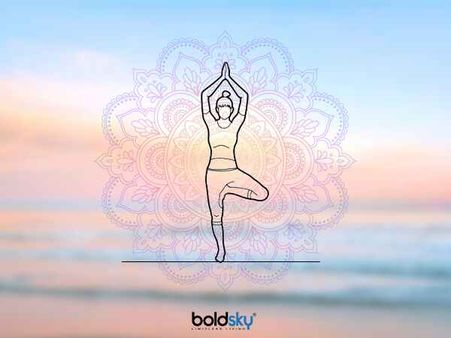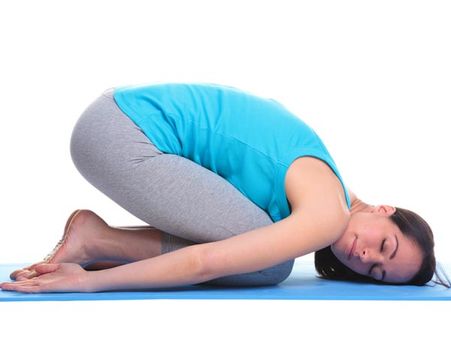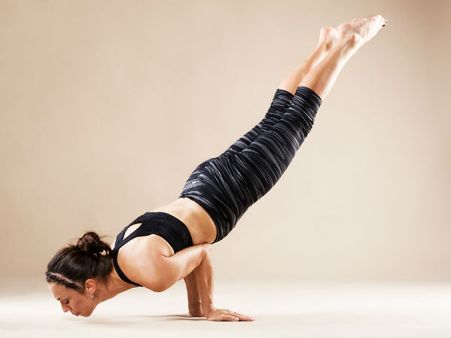Just In
- 2 hrs ago

- 2 hrs ago

- 3 hrs ago

- 3 hrs ago

Don't Miss
- Technology
 Noise Sound Master Bluetooth Speaker Launched in India with 100W Output, 360-Degree Audio, NFC
Noise Sound Master Bluetooth Speaker Launched in India with 100W Output, 360-Degree Audio, NFC - Movies
 Aadujeevitham OTT Release Date And Platform: Discover When And Where To Watch Prithviraj's Movie Online
Aadujeevitham OTT Release Date And Platform: Discover When And Where To Watch Prithviraj's Movie Online - Sports
 GT vs DC IPL 2024: Narendra Modi Stadium Pitch Report, Ahmedabad Weather Forecast & Live Streaming Info
GT vs DC IPL 2024: Narendra Modi Stadium Pitch Report, Ahmedabad Weather Forecast & Live Streaming Info - News
 Dry Days In Bengaluru This Month: When Will Liquor Ban Be Lifted?
Dry Days In Bengaluru This Month: When Will Liquor Ban Be Lifted? - Education
 WBJEE 2024 admit card to be OUT Soon, Check the date here
WBJEE 2024 admit card to be OUT Soon, Check the date here - Finance
 1:10 Split, 3 Bonus, Rs 193.7/Sh Dividend: Rs 15-To-425, FMCG ITC A Bull Stock To Buy, Highest Target Rs 555
1:10 Split, 3 Bonus, Rs 193.7/Sh Dividend: Rs 15-To-425, FMCG ITC A Bull Stock To Buy, Highest Target Rs 555 - Automobiles
 Suzuki Hayabusa 25th Anniversary Edition Launched In India At Rs 17.70 Lakh
Suzuki Hayabusa 25th Anniversary Edition Launched In India At Rs 17.70 Lakh - Travel
 From Coconut Breaking on Head to Men Dressing as Women: 12 Unique Indian Rituals Explored
From Coconut Breaking on Head to Men Dressing as Women: 12 Unique Indian Rituals Explored
Effective Yoga Asanas Diabetics Should Try
Keeping diabetes under control requires healthy lifestyle habits. Diabetics are at risk of several complications like heart diseases and low blood pressure. Adopting yoga as a part of life can help in the long-term management of the condition and improved quality of life.
The health effects of Yoga are abundant and magnificent. They mostly include postures and breathing exercises that are designed to stimulate the pancreas. They also help improve the blood flow to the pancreas.

Yoga postures for diabetics rejuvenate the organ's cells and progress its ability to produce insulin for the body. Yoga must be done for around 40-60 minutes, either in the morning or evening depending on your comfort level. Avoid doing yoga just after the meal as it may cause low blood pressure. Here are a few yoga poses for diabetics. Take a look.

1. Kapalbhati
This is an effective breathing technique for diabetics. It includes forceful exhalations and automatic inhalations. Kapalbharti creates pressure in the abdomen during exhalations that helps improve the functionality of beta-cells located in the pancreas. [1]
How to do: Sit straight with your spine erect and cross your legs. Take a deep breath and exhale quickly and make a puffing sound while doing it. Focus more on the exhalation than inhalation. The exhalation should be done with a sharp force. Breathe in and out only from the nose. Do it approximately for 5 rounds, 120 strokes each time.

2. Vrikshasana (Tree Posture)
Vrikshasana or tree posture helps stimulate the secretion of insulin in the pancreas. It is an effective yoga for people with type 1 diabetes in which insulin production is low. Vrikshasana also helps improve balance and stability in the legs. Leg pain due to nerve damage is one of the common symptoms in diabetic neuropathy.
How to do: Stand with legs straight and feet together. Arms should be by your side and chin should face the ground. Then, put the right foot against the inner left thigh, so that the heel can come as close to the groin as possible. Bring both the hands up slowly and join them. Stay in this position for 30 seconds and breathe normally. Now slowly bring the hands in the middle of the chest with legs straight and feet together and exhalations. Repeat the procedure with the other leg.

3. Setu Bandhasna (Bridge Pose)
In a study, it was found that setu bandhasna along with pavanamuktasana helps in improving glucose levels by increasing sensitivity of the B-cells of the pancreas to the signal of glucose. This helps manage glucose levels in diabetes mellitus. [2]
How to do: Lie down on the yoga mat with feet flat on the floor. Exhale and slowly push up and off the floor. You need to raise your body up while the head has to lie flat on the mat. The rest of your body should be in the air. Try to use your hands to push down for some support. You can even clasp your hands just below your raised back as this can give an extra stretch.

4. Balasana (Child’s Resting Pose)
Balasana helps manage glucose levels in diabetics. This relaxation yoga helps normalise the circulation in the body and relieves stress and fatigue. Balasana also helps rejuvenate the central nervous system and gently stretches the hips, thighs and ankles. These factors help in the management of diabetes.
How to do:Sit on the floor with your weight on the knees. Make sure to even out feet onto the floor. Spread your thighs a bit and sit on the heels. Try to exhale and bend forward from your waist. Your stomach has to rest on your thighs and make sure to extend your back. Next stretch your arms to the front. This will extend the back. Remain in the pose for at least three minutes. Later slowly raise your body and return to the position.

5. Surya Namaskar
Surya Namaskar or sun salutation is the most effective of asanas to control blood sugar levels. The posture allows a series of movements that increase the flow of blood throughout the body and improves insulin production. The 12 asanas in Surya Namaskar draw peace, harmony and strength to the body.
How to do: In Surya Namaskar, each step flows into the next and the ceaseless movement is performed facing the rising sun.

6. Trikonasana (Triangle Pose)
This yoga pose is helpful in the management of type 2 diabetes mellitus. In a study conducted on 13 yoga asanas, trikonasana was one among them that had helped in the significant decrease of glucose in the body. Changes in waist-hip ratio and insulin levels were also recorded. [3]
How to do: Fold one leg at the knee, support yourself on the arm on this side, stretch the other leg as far as you can and raise the other arm at a perpendicular angle. Your body should form a triangle shape.

7. Peacock Pose (Mayurasana)
According to experts, Mayurasana or peacock pose tones up various internal organs which are responsible for improved digestion and circulation. It tones up kidneys, pancreas and liver followed by improvement in their functionalities. .As this yoga pose takes care of multiple organs and organ systems, it may help manage complications of diabetes.
How to do: Lean with shoulders at the front and place hands near your chest with legs extended. Press palms on the floor and keep your head straight. Lift one foot at a time and then the other, balancing the body in the arms. Make sure the legs are lifted parallelly to the ground. Hold the pose for 15-30 seconds. Release the pose forts by putting the feet and then the knees.
-
 faith mysticismInternational Day Of Yoga 2022: Swami Avdheshanandji Leads Josh MASH Yoga Day Campaign
faith mysticismInternational Day Of Yoga 2022: Swami Avdheshanandji Leads Josh MASH Yoga Day Campaign -
 skin careInternational Yoga Day 2022: Beauty Benefits Of Yoga And Yogasanas You Should Try
skin careInternational Yoga Day 2022: Beauty Benefits Of Yoga And Yogasanas You Should Try -
 wellnessInternational Yoga Day 2022: How To Do Yoga At Home?
wellnessInternational Yoga Day 2022: How To Do Yoga At Home? -
 diet fitnessUnion Health Minister To Lead International Yoga Day Celebrations At Statue Of Unity In Gujarat’s Kevadia
diet fitnessUnion Health Minister To Lead International Yoga Day Celebrations At Statue Of Unity In Gujarat’s Kevadia -
 diet fitnessInternational Day Of Yoga 2022: Beneficial Yoga Poses For People With Parkinson’s Disease
diet fitnessInternational Day Of Yoga 2022: Beneficial Yoga Poses For People With Parkinson’s Disease -
 diet fitnessInternational Women's Day: 7 Yoga Poses To Induce Periods Naturally
diet fitnessInternational Women's Day: 7 Yoga Poses To Induce Periods Naturally -
 lifeInternational Yoga Day 2022: History, Theme And Significance Of This Day
lifeInternational Yoga Day 2022: History, Theme And Significance Of This Day -
 wellnessInternational Yoga Day 2021: Benefits Of Tortoise Pose Yoga And How To Do It
wellnessInternational Yoga Day 2021: Benefits Of Tortoise Pose Yoga And How To Do It -
 wellnessInternational Yoga Day 2022: Effective Yoga Asanas And Poses For Cold And Flu
wellnessInternational Yoga Day 2022: Effective Yoga Asanas And Poses For Cold And Flu -
 lifeInternational Yoga Day 2022: Quotes, Wishes And Messages To Share With Your Loved Ones
lifeInternational Yoga Day 2022: Quotes, Wishes And Messages To Share With Your Loved Ones -
 lifeInternational Yoga Day 2022: Interesting Facts Related To Yoga That You May Not Be Knowing
lifeInternational Yoga Day 2022: Interesting Facts Related To Yoga That You May Not Be Knowing -
 wellnessInternational Yoga Day 2022: 6 Yoga Poses To Boost Your Immune System
wellnessInternational Yoga Day 2022: 6 Yoga Poses To Boost Your Immune System


 Click it and Unblock the Notifications
Click it and Unblock the Notifications



